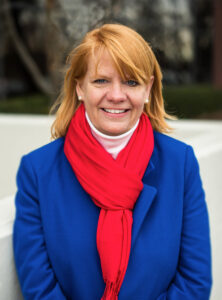Have you been a federal employee for more than 15 years? Jennifer Meyer continues her Fed-Life-Cycle series, reviewing what Committed Mid-Career Feds need to be aware of to prepare for retirement

Complimentary Webinars:
Continuing my series on the Fed-Life Cycle, this segment will focus on what I call the “committed” career fed. You have made the decision that you will most likely stay until you are eligible to fully retire from federal service. Even if not fully eligible, you will receive some or all of your federal retirement benefits under a deferred or postponed retirement in the future. Typically, you will have around 15 years of federal service at this point.
“But Jen, if I’ve made the decision to stay, doesn’t the retirement system do the rest?”
Not exactly. You still have s few more choices that you can make to build a retirement that is thriving and not just surviving. Here are some important planning strategies to make the most of your remaining years of service.
1. Understand your pension formula.
For this article, I will assume that you are in the FERS system (not Law Enforcement or Special Provisions).
| Age | Formula |
| Under age 62 at retirement or separation OR age 62 and older with less than 20 years of service | 1 percent of your high-3 average salary for each year of service |
| Age 62 or older at separation with 20 or more years of service | 1.1 percent of your high-3 average salary for each year of service |
A couple of important points about these formulas-
- Your years of service are computed based on your Retirement Service Comp Date (RSCD). See item 2 below to understand how this date works.
- Sick leave will be converted to years and months and will be added to your overall service time- see item 3 below.
- Do not underestimate the benefits of age 62 with 20 years of service! Once you know the long-term impact on your retirement- it is highly unlikely you will leave before age 62 with 20 years of service. This can be the difference between surviving and thriving!
2. Know your retirement eligibility rules.
The most important date for you and your plan to retire is your “Retirement Service Computation Date (RSCD)”. This is the date from which OPM will determine both your eligibility and computation calculation for the FERS or CSRS pension. I often meet people who think that because they received credit for leave purposes, it also counts for retirement. It sometimes does, but often does not without some action on your part. For example, if you had military service time, temporary time, Peace Corps, or VISTA service time, you need to make sure you are getting credit if you are eligible. Another situation I have seen is an employee who was a contractor prior to coming to the government. Sometimes, an agency will give leave credit, but not retirement credit. Sorting this process out can take months, and sometimes years. Switching agencies or taking a break from service can also impact your RSCD. Do not wait until the last minute to be sure your RSCD is correct!
3. Manage your sick and annual leave carefully.
Like I wrote in point one, sick leave matters! When you do retire from federal service under a regular immediate retirement, your annual leave is paid out in a lump sum. Your sick leave, however, is converted to years and months of service and added to the pension computation. There are limits on how much annual leave can be carried over each year, but there are no limits on sick leave! Bottom line- you can be paid on your accrued sick leave for the rest of your life in the form of a higher pension! It is also important to note that you do not get paid for days of sick leave if they are less than 30 days. Do not retire leaving 28 days of sick leave on the table- work a little longer to get that full month!
4. FEGLI life insurance- NOW is the time to plan ahead!
This is the benefit that I hear all the time- “I wish I knew that.” You probably know that your FEGLI life insurance will get more expensive over time, but do you know HOW much more expensive? And did you also know that if you are in reasonably good health, you can likely get the same coverage for a lower overall cost by being proactive in these years? For example, if you carry the option B coverage at 5x your salary, the cost will approximately double every 5 years once you are into your 50s. I have seen feds save thousands of dollars in life insurance premiums by being proactive in these Committed years.
Separate from FEGLI life insurance is the concept known as Pension Maximization. You may be advised that there are ways to avoid the future cost of the survivor benefit on your pension by using life insurance. I have not yet found a scenario where funding a permanent life insurance policy will provide the same future benefit that a guaranteed survivor pension does. Depending on the date of the annuitant’s death (which we cannot predict), a policy may need to have a death benefit of millions of dollars. My advice is to be very careful before committing to any such strategy.
5. Evaluate Long Term Care options.
Not everyone needs long-term care insurance. However, the time to analyze your situation and decide if it makes sense to purchase coverage is usually during this time. After age 60, long-term care gets very expensive. It is not a fun conversation, but it is an important one. A significant long-term care event can wipe out decades of savings in a very short time. It is for many retirees the single biggest financial risk in retirement.
6. MYSM- Make Sure You MAX
Every year is an important year with TSP- but these years are often when employees make one of the biggest mistakes- they become TOO conservative with their TSP allocations! When thinking about your allocation, remember that the TSP is your longest-term money. The goal with TSP is to have it for the rest of your life. Depending on when you retire, this could be over 20 or even 30 years. Your TSP is most likely going to be the place where you keep up with and hopefully stay ahead of, rising inflation over the long term. Finding the right asset allocation for your risk tolerance and goals is vital to maximizing the TSP. In addition, often, these last years are the years when Feds are most likely able to fully fund their TSP up to the IRS limits.
7. Invest outside of TSP.
Building up “mid-term money” can improve your quality of life in retirement. This also gives you a source of funds that will be taxed at capital gains rates versus ordinary income tax rates. We refer to this as tax diversification.
8. Invest in YOU.
Leverage “mental capital.” Ben Franklin once wrote, “An investment in knowledge always pays the best interest.” Adding to your career skills is a sound strategy. Here are some resources that we are familiar with-
- Inquire with your agency’s Chief Learning Officer (HR department) for funds that are set aside for employee training.
- GSA provides a number of training courses that feds can sign up for either through their agencies or on their own.
- OPM provides options for courses (these are mainly agency paid, due to costs).
- The Harvard Kennedy School has choices that Feds can also attend.
In summary, after 15 years of government service, it could be tempting to take the approach that things will be what they will be with regard to retirement. However, by being proactive in planning- you will be far less likely to be surprised when the time comes to submit that retirement application. Remember, the goal is not to simply survive in retirement- but rather to thrive! With proper planning, including following the steps I have laid out in this series of articles- you will be prepared to live a retirement beyond your wildest dreams!
**Written by Jennifer Meyer, Financial Planner. The information has been obtained from sources considered reliable but we do not guarantee that the foregoing material is accurate or complete. Any opinions are those of Jennifer Meyer and not necessarily those of RJFS or Raymond James. Any information is not a complete summary or statement of all available data necessary for making an investment decision and does not constitute a recommendation. Investing involves risk and you may incur a profit or loss regardless of strategy suggested. Every investor’s situation is unique and you should consider your investment goals, risk tolerance, and time horizon before making any investment or financial decision. Prior to making an investment decision, please consult with your financial advisor about your individual situation. While we are familiar with the tax provisions of the issues presented herein, as Financial Advisors of RJFS, we are not qualified to render advice on tax or legal matters. You should discuss tax or legal matters with the appropriate professional. **
